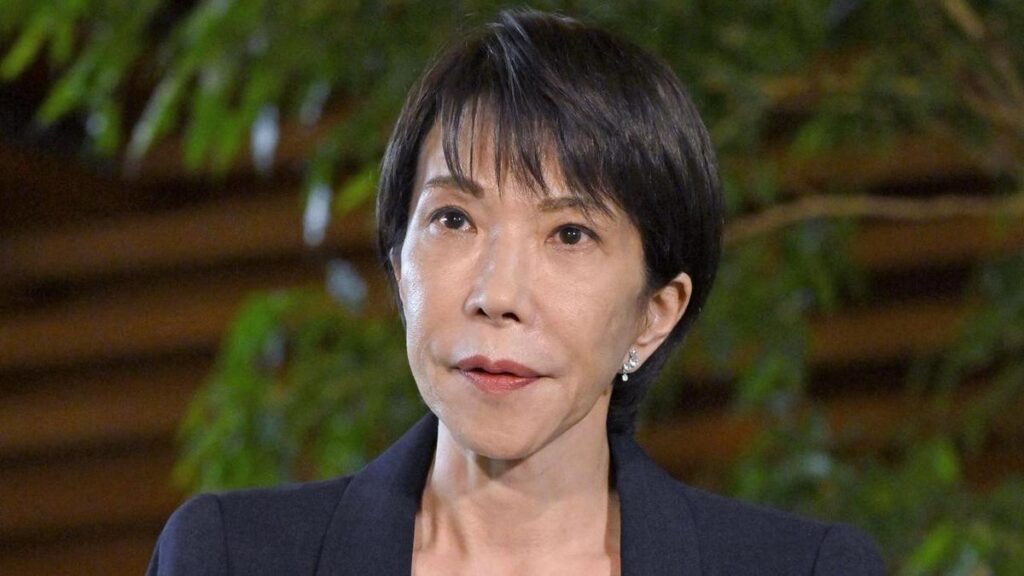Sanae Takaichi has taken office as Japan’s first female prime minister, but her surprisingly male-dominated cabinet and socially conservative track record have left some women ambivalent in a nation that lags on gender equality.
Takaichi appointed only two female ministers in a 19-member cabinet, matching her predecessor and falling short of her previously announced plan to ensure women’s representation in top posts “not particularly lower than Nordic countries”.
“The line-up she announced betrayed that promise from the outset,” said Tohko Tanaka, a media and gender studies professor at the University of Tokyo.
“This is extremely disappointing and offers no hope for women’s empowerment.”
When asked about her cabinet’s gender imbalance, Takaichi told a press conference that she “prioritised equal opportunity” and “assigned the right people to the right positions”.
Her options were limited, given that only 13 per cent of her Liberal Democratic Party (LDP) politicians are women. The party aims to raise the ratio to 30 per cent by 2033. Female representation in Japanese cabinets has never topped 30 per cent, while women comprise much bigger portions of Nordic cabinets, ranging from Denmark’s 36 per cent to Finland’s 61 per cent.
Japan ranked 118th of 148 countries in the World Economic Forum’s latest Global Gender Gap Report, the lowest in the Group of Seven industrial nations and below most of its Asian neighbours including China, South Korea and the Philippines.
The standing reflects limited presence of women in legislatures, along with a vast pay gap. By contrast, Nordic states lead on political gender equality. Although Takaichi’s “Nordic” reference proved no more than campaign rhetoric, smashing the glass ceiling – alongside her Finance Minister Satsuki Katayama – was a symbolic step, said Tiina Airaksinen, a senior lecturer in Asian studies at the University of Helsinki.
“It has taken us more than 120 years to come into this situation,” Airaksinen said, referring to the fact that Finland achieved women’s suffrage in the early 1900s. Japan reached the milestone after World War II.
“She can’t change everything in Japanese society immediately, but she can start the change.”
Like Italy’s first female prime minister Giorgia Meloni, Takaichi is not seen as a trailblazer for women’s rights in Japan, having closely aligned herself with the LDP’s socially conservative platform.
Recent public polls show she is more popular among men than women.
“She is a woman who has advocated the LDP’s patriarchal model, in which men are supposed to overwork at the centre of society and women should support them through unpaid care work,” said Yayo Okano, a Doshisha University professor who specialises in
One prime example is Takaichi’s defence of the legal restrictions that require married couples to share a single surname, Okano added.
The current rule means that wives take their husbands’ names in more than 90 per cent of cases. Critics, including business lobbies and even some liberal-leaning LDP members, say this disproportionately affects women’s careers, while the small group of opponents within the conservative circle calls it indispensable to family unity.
To secure Takaichi’s premiership, the LDP struck a partnership with the right-wing, small government-oriented Japan Innovation Party, known as Ishin.
Their social security policies, such as a stricter ability-to-pay principle, could tighten support for vulnerable groups including single parents and low-income earners, many of whom are women, said Yoko Otsuka, a professor of welfare policy and gender studies at Ritsumeikan University.
The parties also agreed to promote male-only succession of Japan’s imperial family, which would be “simply sexist” without a rational explanation, Otsuka said.
https://thewest.com.au/politics/japans-first-female-pm-to-usher-in-conservative-shift-c-20432410


